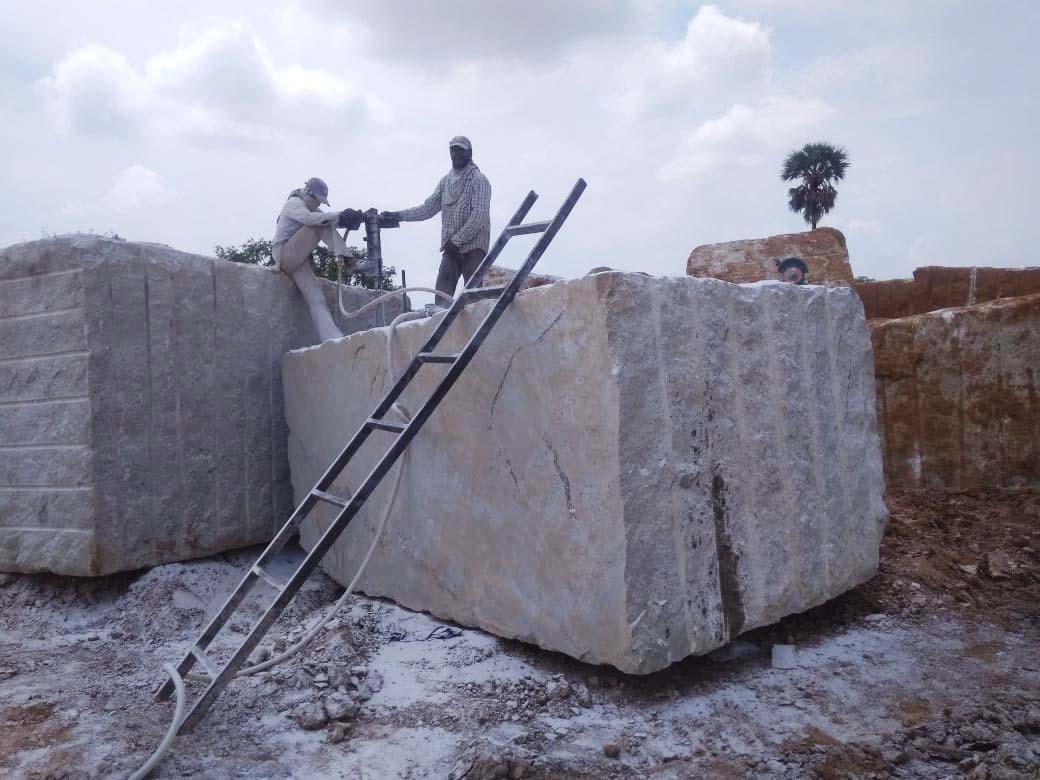Opening All-natural Prizes: Granite Quarries in South Africa Introduced
Opening All-natural Prizes: Granite Quarries in South Africa Introduced
Blog Article
Unveiling the Mysteries of Granite Quarrying: Where Toughness and Style Meet
The globe of granite quarrying is a realm where the raw toughness of nature converges with human creativity to produce frameworks that stand the examination of time with an air of beauty. From the midsts of quarries to the careful sprucing up in workshops, the procedure of transforming granite right into building wonders is an intricate dance of practice and advancement. As we peer right into the midsts of this ancient craft, we start to discover the covert ins and outs that form the very essence of our constructed environment.
The Beginnings of Granite Quarrying
In the annals of building history, the beginnings of granite quarrying are shrouded in a tapestry of ancient craftsmanship and geological marvels. Going back to ancient Egypt and Mesopotamia, the removal of granite from quarries noted the beginning of a trip that would at some point result in the development of some of the world's most famous frameworks.
Granite quarrying's origins can be mapped to the competent craftsmens who acknowledged the rock's durability and visual appeal. With a mix of primitive devices and sheer decision, these very early quarry workers discovered granite blocks that would certainly become the structure blocks of worlds.
As human beings developed, so did the techniques of quarrying granite. The Romans, renowned for their design prowess, established innovative methods for extracting granite to create monoliths, temples, and roadways that stood the test of time.
The tradition of these ancient quarrying methods proceeds to shape modern style, with granite remaining a sign of toughness and beauty in building and construction jobs around the globe. (granite quarries in south africa)
Tools of the Quarrying Profession
The evolution of granite quarrying strategies from ancient people to contemporary times highlights the vital role played by the tools of the quarrying trade in shaping the sector's techniques. In ancient times, quarrying devices were primary, often including chisels, hammers, and wedges made from products like bronze or iron. These devices needed significant manpower and time to remove granite obstructs from quarries.

Furthermore, the intro of pneumatically-driven tools and high-powered machinery has considerably decreased the physical labor needed in quarrying operations, enhancing worker safety and performance. As the quarrying sector proceeds to introduce, the tools of the trade remain at the center of driving progression and forming the future of granite extraction.
Drawing Out Blocks of Granite
Making use of accuracy machinery and progressed techniques, the removal of granite blocks from quarries has actually become an innovative process in the modern-day quarrying market. Controlled blowing up techniques are then employed to break apart the granite hop over to these guys right into workable areas.

Sprucing Up and Completing Techniques
To attain a perfect surface on granite blocks, knowledgeable craftsmens employ a collection of precise sprucing up and completing techniques. After the first extraction and forming processes, the granite obstructs go through a comprehensive sprucing up phase to improve their natural appeal and sturdiness. One usual technique made use of in polishing granite is ruby abrasion, where industrial rubies are used to grind and brighten the stone to a smooth surface. This procedure not only develops a lustrous surface area but likewise ensures uniformity in shade and texture throughout the granite block. over here
In enhancement to sprucing up, finishing methods are used to more refine the granite's appearance. These methods might consist of flaming, honing, or brushing, each offering distinct appearances and coatings to suit different aesthetic preferences. Flaming, as an example, entails revealing the granite surface area to heats to create a rough, textured surface, suitable for outside applications where slip-resistance is crucial. Sharpening, on the other hand, provides a matte finish that is smooth to the touch, ideal for indoor countertops and flooring. By thoroughly choosing and applying these polishing and completing techniques, artisans can transform raw granite blocks right into exquisite pieces that display both toughness and style.

Environmental Influence and Sustainability
With the expanding focus on environmental consciousness in the industry, granite quarrying methods are progressively looked at for their impact on natural resources and long-term sustainability. Additionally, the transportation of granite from quarries to refining facilities generates carbon exhausts, further adding to ecological degradation.
To reduce these impacts and guarantee sustainability in granite quarrying, sector stakeholders are embracing different measures. Implementing innovative innovations to view it now lower energy intake and water use, recovering quarried land for environmental repair, and promoting accountable sourcing techniques are some techniques being used. In addition, certifications such as the Woodland Stewardship Council (FSC) and the Management in Energy and Environmental Design (LEED) aid customers identify eco pleasant granite products.
Verdict
To conclude, granite quarrying is a process that needs specialized devices and techniques to essence blocks of granite and brighten them to a high degree of finish. While the ecological influence of quarrying can be significant, efforts are being made to boost sustainability techniques in the market. Generally, granite quarrying is a delicate equilibrium between taking advantage of the toughness and elegance of this natural stone while reducing its influence on the setting.
Report this page